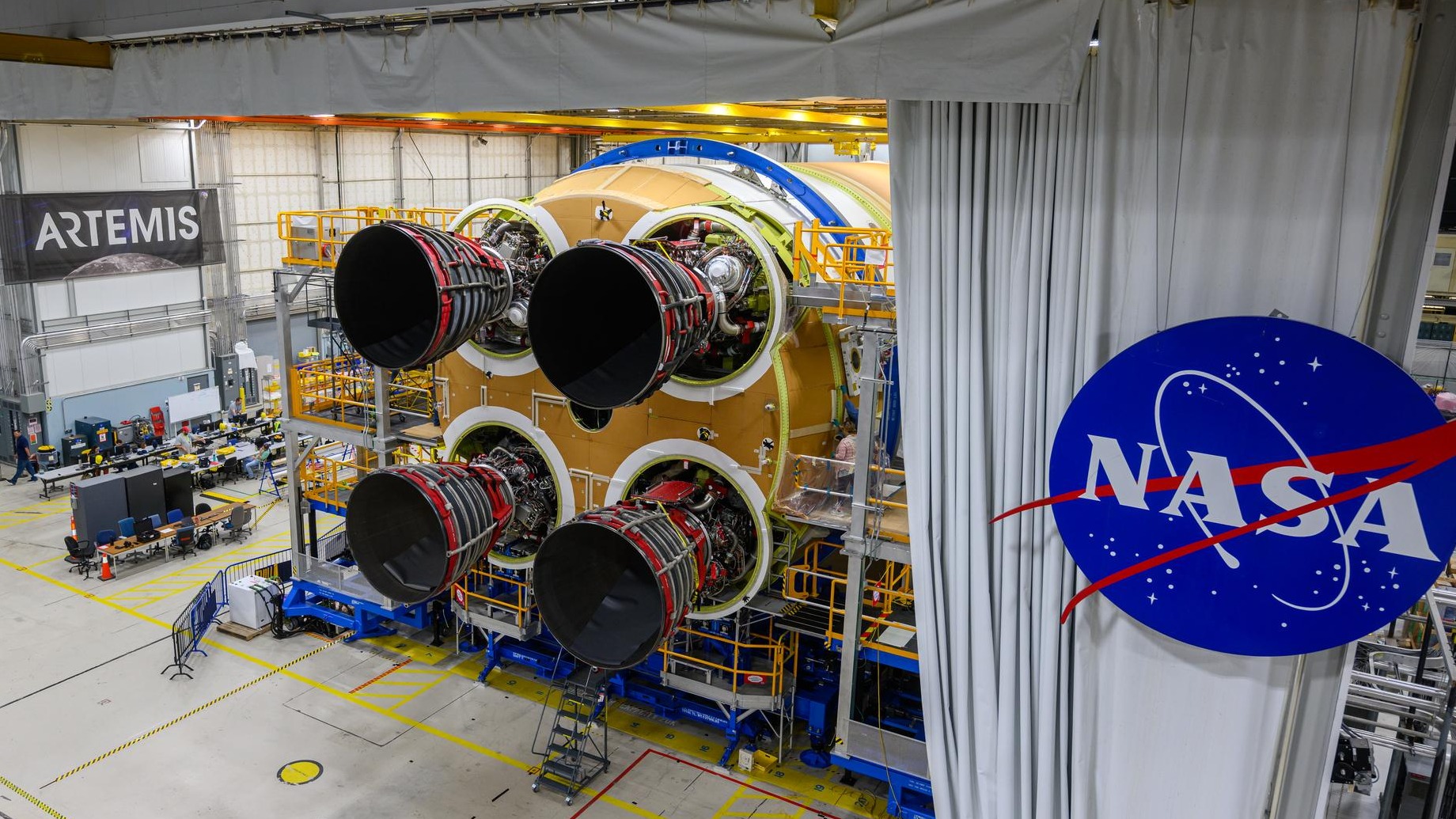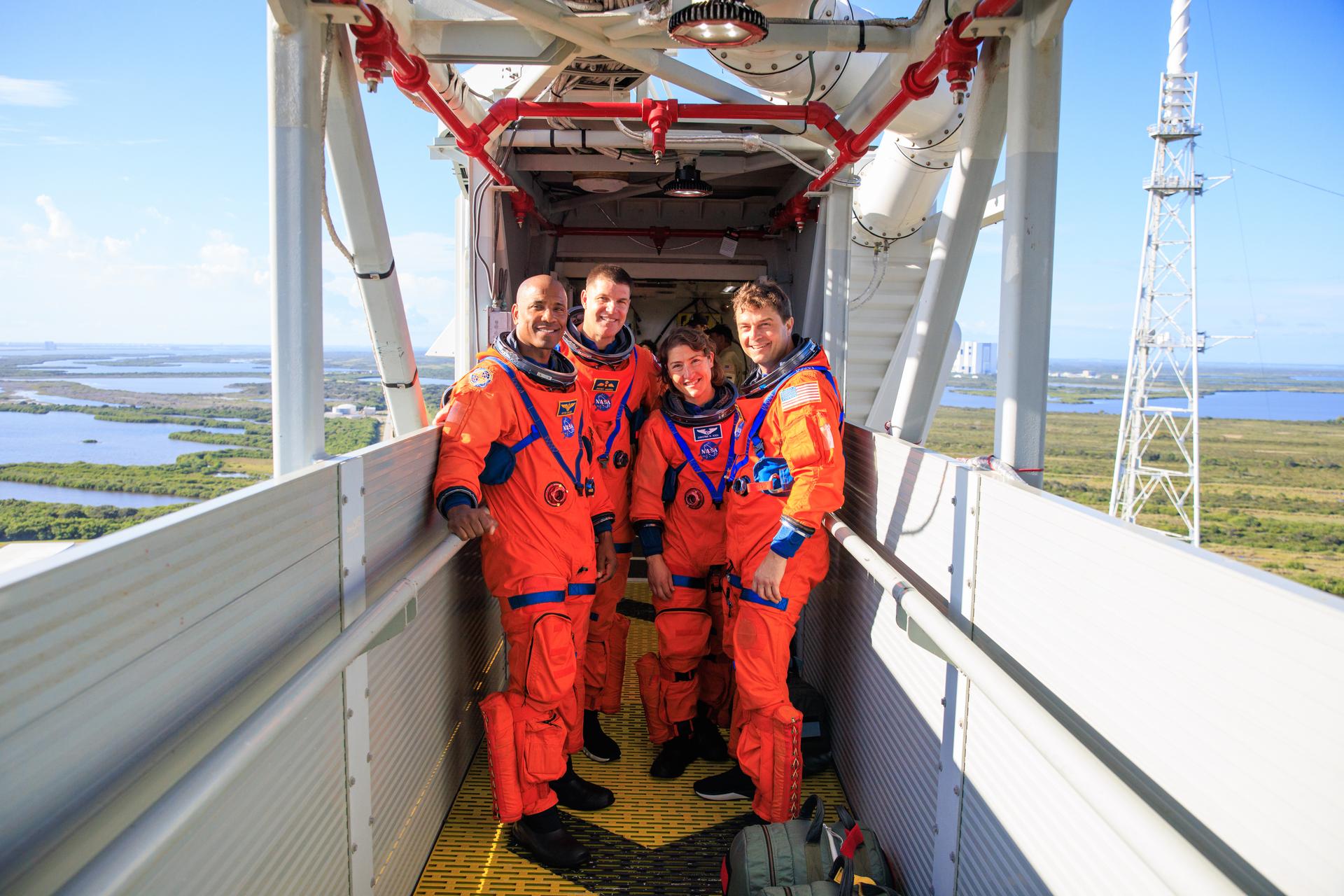1 year after Artemis 1 launch, NASA readies Artemis 2 to shoot for the moon again (video)
Artemis 2 will send four astronauts around the moon no earlier than 2024.

Space fans, get ready to start your moon engines.
NASA's Artemis 1 uncrewed moon mission lifted off from NASA's Kennedy Space Center (KSC) in Florida on Nov. 16, 2022. One year later, the next moon rocket ride for astronauts is in testing for a new mission that could launch in late 2024.
The crewed mission, known as Artemis 2, will send four astronauts around the moon. As the quartet continue their complex training, their Space Launch System (SLS) rocket, side boosters, Orion spacecraft and other key elements are under assembly in various parts of the United States.
NASA highlighted the Boeing-led SLS construction in a recent time-lapse, and in October the agency celebrated the final mating of all four Aerojet Rocketdyne (L3Harris Technologies) RS-25 engines to the 212-foot (65-meter) core stage of the rocket. The recycled space shuttle engines will help send Artemis 2 aloft, kicking off the human stage of the NASA-led Artemis program that seeks to land people on the moon in 2025 or 2026.
Related: Artemis 2 moon astronaut says crew is ready for ambitious 2024 mission
Artemis 1 was the first-ever launch for SLS, which had hiccups (such as fueling leaks) that delayed a few liftoff attempts. But such issues are to be expected on a test mission, and once SLS got the Orion spacecraft off the ground, the mission went beautifully.
Three mannequins and numerous science experiments flew around the moon aboard Orion on Artemis 1. Then the spacecraft made a safe splashdown off the coast of Baja California on Dec. 11, 2022, opening the way for human missions to follow.
Breaking space news, the latest updates on rocket launches, skywatching events and more!
The Artemis 2 crew was named in April in a star-studded NASA celebration at the agency's Johnson Space Center in Houston. The agency is now adjusting launch procedures to prepare for the first-ever crewed Artemis mission.
Data from Artemis 1's liftoff will allow launch managers to tweak the pressure, temperature and flow rates of SLS propellant for leak management. Also expected are examinations of "interfaces" (where fuel lines enter the tanks) for further leak avoidance.
The mobile launcher that will support Artemis 2 is undergoing months of testing at KSC to cover all aspects of liftoff. For example, team members performed a water deluge test in October and a launch dress rehearsal in September with the four astronauts.
The four astronauts on board Artemis 2 are mostly space veterans: NASA's Reid Wiseman, Victor Glover and Christina Koch have all flown long-duration missions to the International Space Station, with Koch staying aboard the orbiting for nearly a continuous year.
The fourth member — the Canadian Space Agency's Jeremy Hansen — is on his first mission due to Canada's relatively small ISS funding allocation (as funding determines the number of flights available). He joined the astronaut corps way back in 2009, however. Hansen also has extensive management experience that includes managing the 2017 astronaut class training schedule and playing a key role in organizing four complex spacewalks to repair an ISS dark-matter detector.
Related: Artemis 2's Canadian astronaut got their moon mission seat with 'potato salad'
The Artemis 2 astronaut crew is busy now with Orion training and medical procedures and is expected to take part in a simulated recovery exercise at sea with NASA and the U.S. Navy relatively soon. Meanwhile, all the flight hardware is being assembled at various NASA facilities.
The core stage is at NASA's Michoud Assembly Facility in New Orleans, where all four engines were secured Oct. 6 after individual "soft mates" the month before. "Engineers will perform testing on the entire stage and its avionics and electrical systems, which act as the 'brains' of the rocket to help control it during flight," NASA officials wrote in October.
After the core stage passes an acceptance review in a few months, it will be readied for a waterway journey to KSC via a Pegasus barge. The 310-foot-long (94 meters) vessel type was first built in 1999, according to NASA materials, to send the huge external tanks of space shuttles from the coast of Louisiana to KSC.
The components of the twin solid rocket boosters for Artemis 2 (also recycled from the space shuttle) are already at KSC after the final pieces arrived by train in September. They are now coming together with care.
Each Northrop Grumman-manufactured booster has a mass of 1.6 million pounds (720,000 kilograms), or roughly the equivalent of four blue whales, per NASA information. Earlier this month, agency officials said they are focusing on building each booster's aft assembly, which helps steer the vehicles during flight.
Meanwhile, Orion finished its first power-on test on Nov. 6 at KSC, showing that its two key parts are communicating. (Orion includes an American-made crew module and a European Service Module.) Coming up soon will be a one- or two-week "closed-loop mission" test that will simulate an entire mission for Orion on the ground, making sure that "navigation, propulsion and other subsystems are reacting correctly to maintain the mission course," Dominique Siruguet, ESM assembly integration and verification engineer at the European Space Agency, said in a Nov. 6 statement.

Elizabeth Howell (she/her), Ph.D., was a staff writer in the spaceflight channel between 2022 and 2024 specializing in Canadian space news. She was contributing writer for Space.com for 10 years from 2012 to 2024. Elizabeth's reporting includes multiple exclusives with the White House, leading world coverage about a lost-and-found space tomato on the International Space Station, witnessing five human spaceflight launches on two continents, flying parabolic, working inside a spacesuit, and participating in a simulated Mars mission. Her latest book, "Why Am I Taller?" (ECW Press, 2022) is co-written with astronaut Dave Williams.

